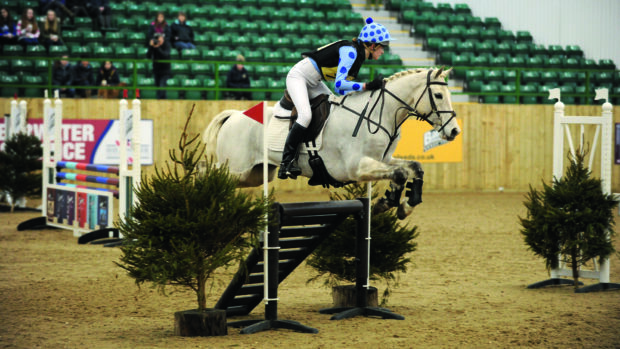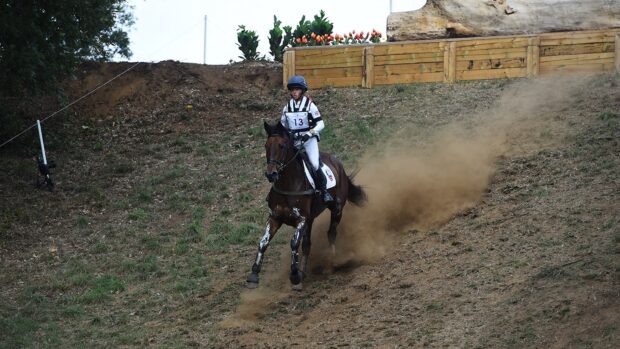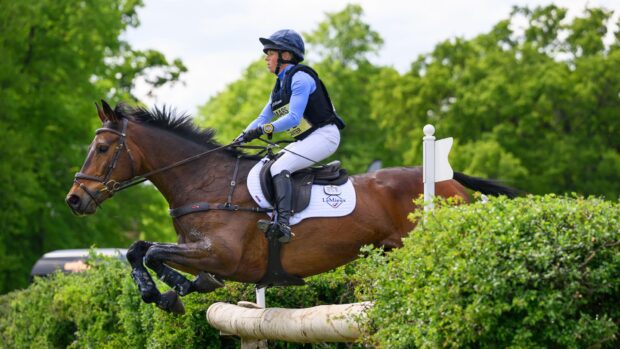The Olympic eventer takes us through a step-by-step guide to one of her favourite exercises — a bounce to a parallel to a bounce — which aims to stop your horse rushing, and think about where he's placing his feet instead
The aim
This exercise tests straightness, rhythm, agility and balance. I will quite often have this grid set up in my school along with single fences and come back to it in between working on other things. It is really good for horses that rush as it keeps them focused and thinking about their footwork.
The exercise
- Set up a grid with a bounce (on a three-yard distance) followed by a stride (seven yards) to a small parallel. Build a mirror image of this on the landing side, so the grid can be jumped in both directions. The bounce fences don’t need to be big — 40-50cm is fine.
- I like to start with a low, wide oxer in the middle as it encourages the horse to stretch out over the fence and use his back. It also produces a slower, more deliberate jump.
- Work the horse on the flat until you are happy with the rhythm and balance. Do not approach the grid if your horse is rushing or pulling; keep working him until he settles.
- When you come to the grid, make sure your lower leg is strong and your upper body tall. If you fold too quickly over the fences it will make the horse quicken. Wait for the horse’s neck to come up to you.
- You must make sure you stay completely straight after the fence through the rest of the bounces.
- Jump through the grid in both directions, but when you change direction always make sure the horse is balanced by controlling the outside shoulder with your outside hand and leg.
- You can gradually build the oxer higher and wider, or you can use an upright in place of it. For a horse that tends to drift left or right I will often use V-poles on the middle element to encourage him to stay straight. V-poles can also help with a horse that rushes as they encourage him to assess the fence and make a better shape.
Like this? You might also enjoy reading these:
9 common cross-country queries solved
Spencer Wilton: simple exercises to develop better control in the dressage arena
Watch out for
- The most common mistake is the rider trying to place the horse at the first bounce fence. This disrupts the rhythm that you are working so hard to establish. Think about keeping the rhythm even all the time.
- There is a tendency to jump the fence in the middle and then relax over the second set of bounce rails and let the horse do his own thing: look up and keep riding straight all the way down the grid.



